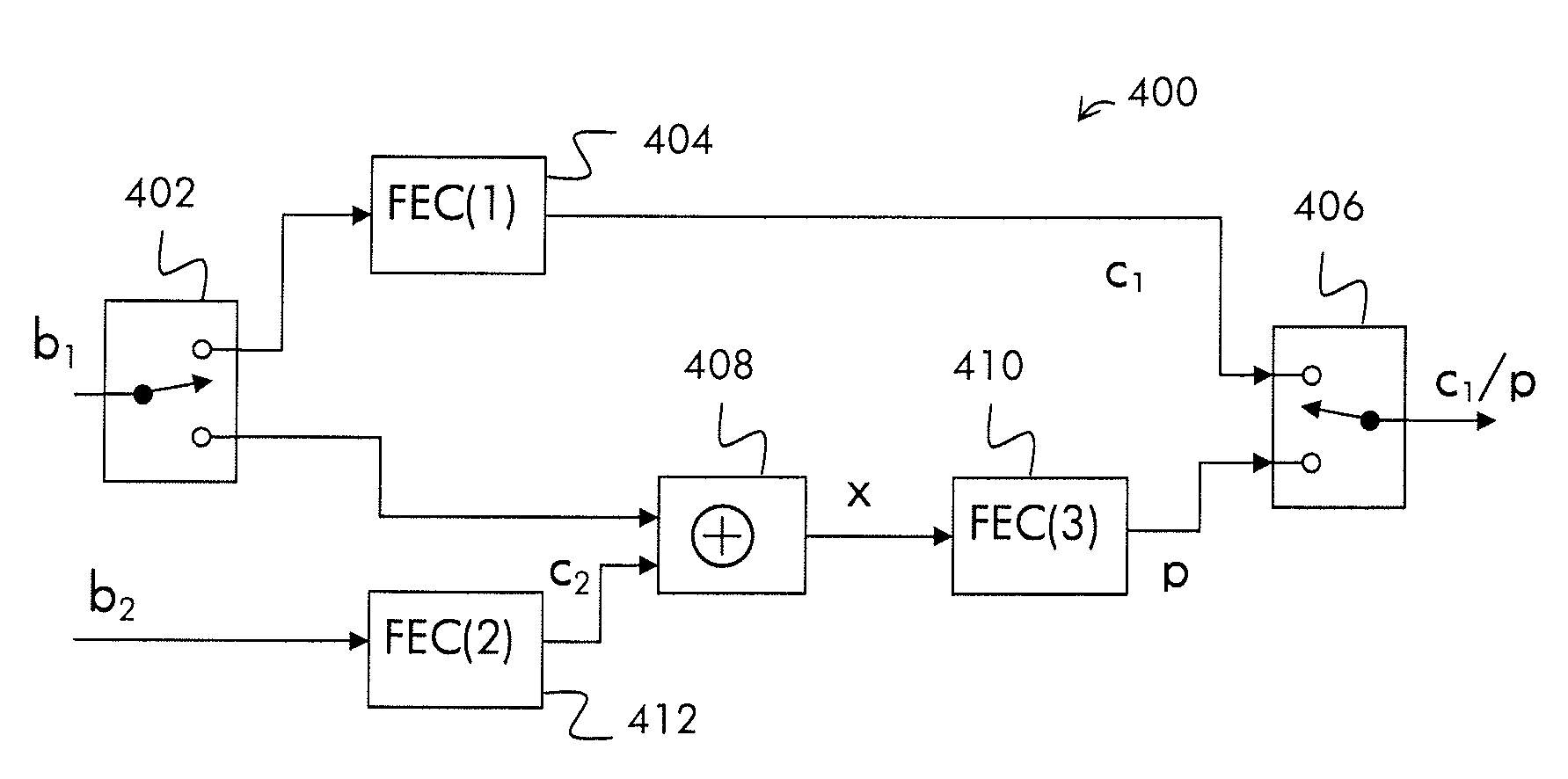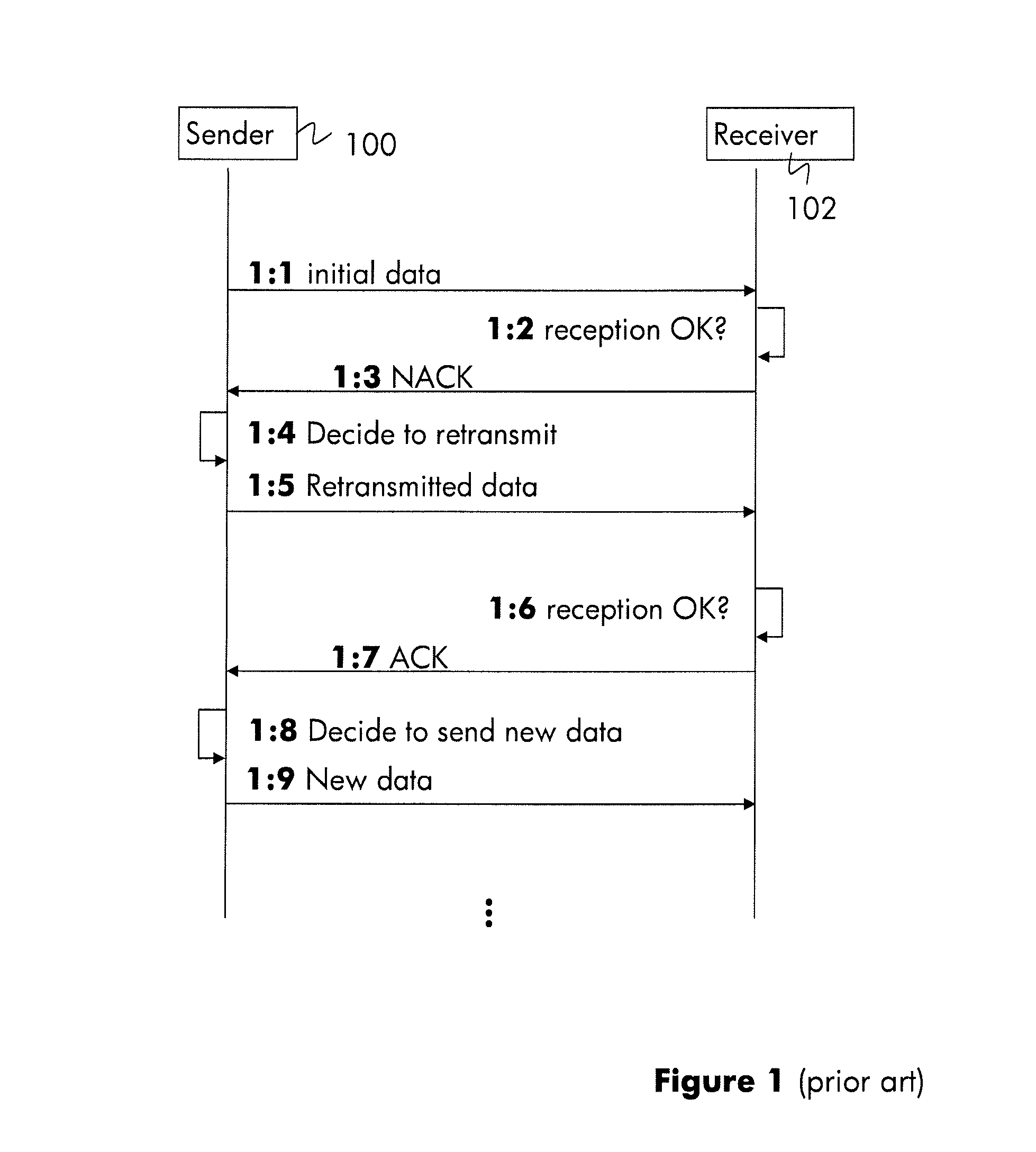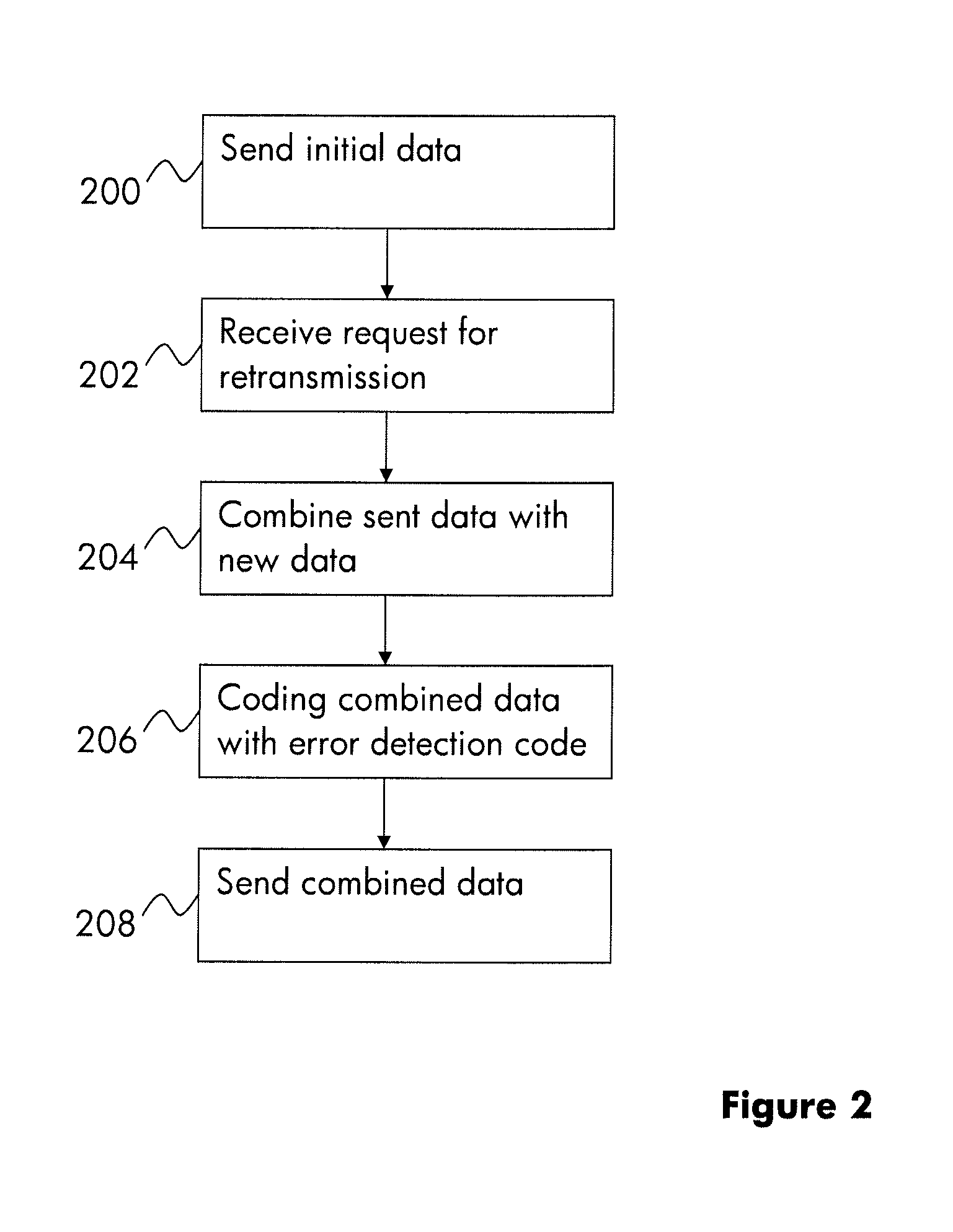Method and Arrangement for Retransmission Control
- Summary
- Abstract
- Description
- Claims
- Application Information
AI Technical Summary
Benefits of technology
Problems solved by technology
Method used
Image
Examples
Embodiment Construction
[0023]Briefly described, a solution is provided for enabling a more flexible, effective, robust, and less delayed process for retransmissions of data. A sending system entity combines bitwise initial data to be retransmitted with new data into a combined data stream which is transmitted, without affecting the transmission rate substantially, i.e. the retransmitted data will be transmitted “piggy-backed” on the new data. A receiving system entity determines the retransmitted data and the new data, based on the received combined data and earlier received initial data which is affected by errors and initiated the retransmission. The same non-linear operation will be employed both for combining the data streams to be sent into a combined data stream, and to determine retransmitted data and new data from the received combined data stream.
[0024]In this description, the term “sending system entity” is used to generally represent any system entity capable of wireless communication with a re...
PUM
 Login to View More
Login to View More Abstract
Description
Claims
Application Information
 Login to View More
Login to View More - R&D
- Intellectual Property
- Life Sciences
- Materials
- Tech Scout
- Unparalleled Data Quality
- Higher Quality Content
- 60% Fewer Hallucinations
Browse by: Latest US Patents, China's latest patents, Technical Efficacy Thesaurus, Application Domain, Technology Topic, Popular Technical Reports.
© 2025 PatSnap. All rights reserved.Legal|Privacy policy|Modern Slavery Act Transparency Statement|Sitemap|About US| Contact US: help@patsnap.com



